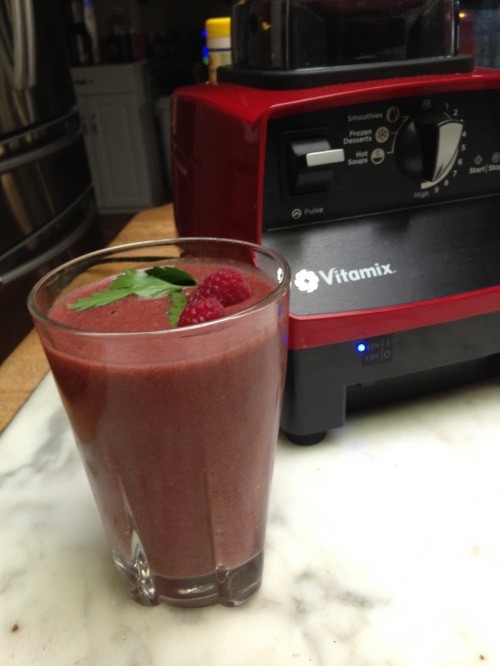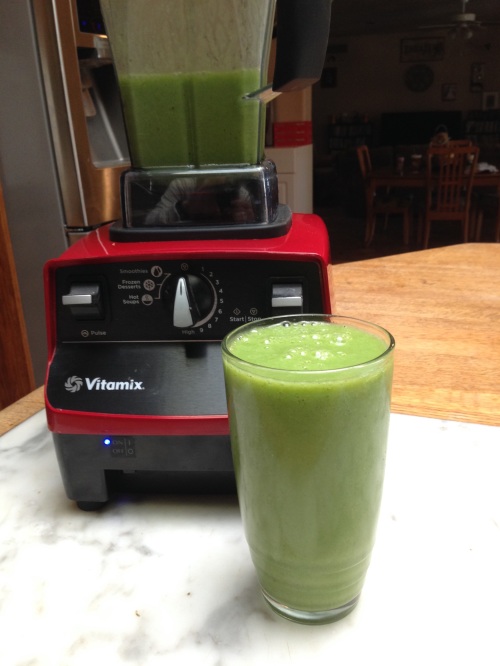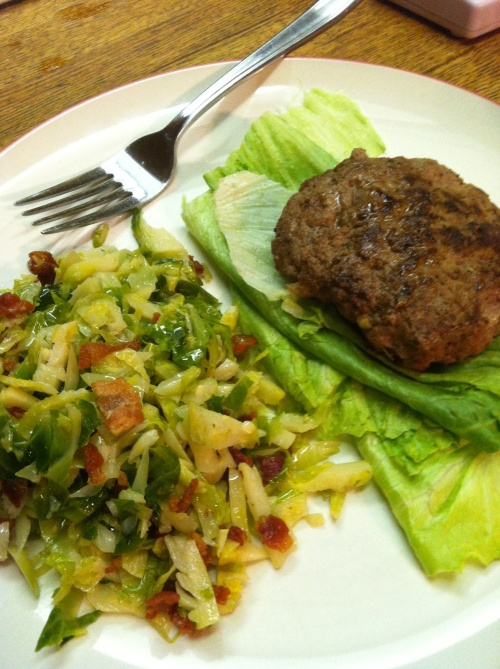
Slow-cooker chicken and roasted veggies
Guess the percentage of light versus dark meat in a chicken.
It’s 50:50. Along with the breasts, the wings are considered light or white meat.
Guess how much meat and skin you have left after you cook and debone a whole chicken. No peaking.
About half the raw weight you started out with. Not counting the giblets you feed to the coyotes.
The nutritional analysis of this meal (see below) assumes that you eat the chicken skin and the onion on the bottom of the slow-cooker (sometimes called a Crock♦Pot although that’s a registered trademark). Much of the chicken fat will stay in the bottom of the slow-cooker after you remove the chicken and onion. Now you’ve got chicken stock to use in other recipes.

Meal prep: zucchini and broccoli
Ingredients:
1 whole young chicken, about 5 lb (2.3 kg) raw gross weight
1 medium onion, 6.5 oz (185 g), peeled and cut into 1-cm thick discs or circles
3 tbsp (45 ml) olive oil
5 garlic cloves
5 sprigs fresh thyme leaves, about 1/2 tsp (2.5 ml) (or a third of that if using dried thyme—I’ve read that dried thyme is better to add early in the cooking process whereas fresh may be best if added toward the end)
3/4 tsp (3.7 ml) fresh ground black pepper (or to taste)
3/4 tsp (3.7 ml) salt (or to taste)
1/2 tbsp (7.4 ml) fresh or dried rosemary
2 sprigs fresh parsley, leaves only, chopped
8 oz (240 ml) canned chicken broth
1.5 cups (360 ml) broccoli florets (aka flowerets)
3 zucchini squashes (6.5 oz or 185 g each), cut into 1/2-inch or 1-cm discs
5.5 oz (155 g) fresh carrots, peeled and cut into bite-sized pieces
2 tsp (10 ml) lemon juice
1/4 tsp (1.2 ml) lemon zest (optional)
1/4 tsp (1.2 ml) pepper flakes (do you have a left-over packet from your old pizza-eating days?)
5 medium (2 and 3/8 inch or 6-cm diameter) tangerines

Slow-cooker loaded and just about ready to fire up
Instructions:
First, the slow-cooker chicken. This cooks for eight hours, so you’ll want to start in the morning. Place the cut onion in the bottom of the cooker. Do what you want with the chicken giblets (neck, liver, heart, gizzard), even eat them after cooking. The coyotes don’t care if cooked or not. Rub 1 tbsp (15 ml) of the olive oil onto the top of the chicken, then place in the cooker on the bed of onion. Cut three of the garlic cloves into thirds and drop into the cooker. Add the chicken broth to the cooker. Sprinkle the thyme leaves on top of the chicken, along with 1/4 tsp (1.2 ml) of black pepper and 1/4 tsp (1.2 ml) salt. Sprinkle the rosemary and parsley into the cooker. Close the lid and cook on low heat for eight hours.

At the base of the slow-cooker
Now the roasted vegetables. Preheat the oven to 400 ºF or 200 ºC. In a large baking dish or sheet, place the broccoli, zucchini, carrots, 2 minced garlic cloves, the lemon juice and zest, the pepper flakes, 1/2 tsp salt (2.5 ml) , 1/2 tsp pepper (2.5 ml), and 2 tbsp olive oil (30 ml). Mix thoroughly. You could do the mixing in a bowl if you wish, then transfer to a cooking sheet. You want these cooking as a thin layer rather than bunched on top of each other. Place in oven and cook for 15–20 minutes, depending on how crisp you like your veggies. The carrots will always end up firmer than the others.
Enjoy a tangerine for desert.

Next step is the oven

Eight hours later…
Servings: 5 (a serving is 7 oz of chicken (with skin), 1 cup of veggies, and 1 tangerine)
Nutritional Analysis per Serving:
49% fat
13% carb
38% protein
692 calories
24 g carbohydrate
5 g fiber
19 g digestible carbs
1,409 mg sodium
1,132 mg potassium
Prominent features: Rich in protein, vitamin A, B6, C, iron, niacin, pantothenic acid, phosphorus, selenium, and zinc.

Here’s all of it except the tangerines. To do my nutritional analysis, I had to debone the bird and weigh the meat and skin.



































